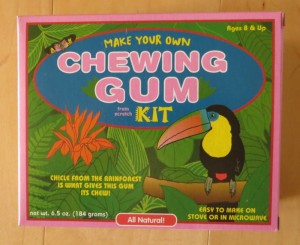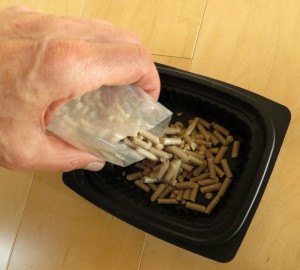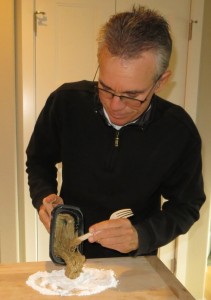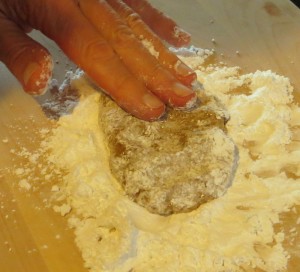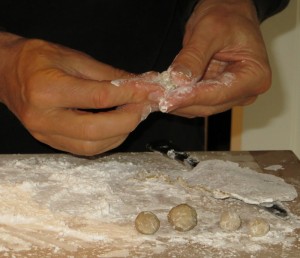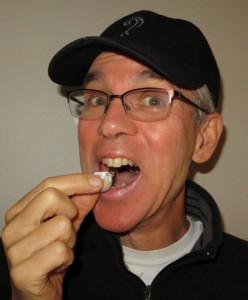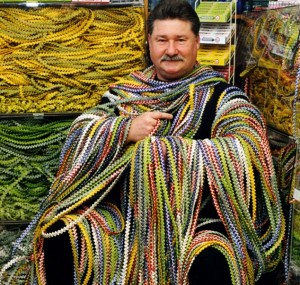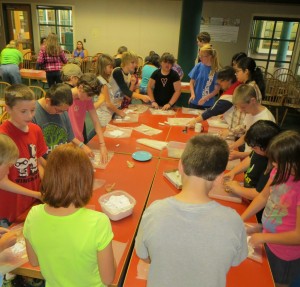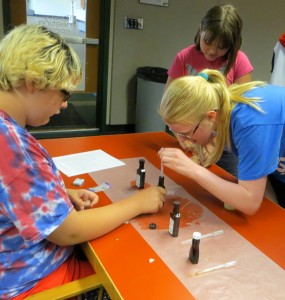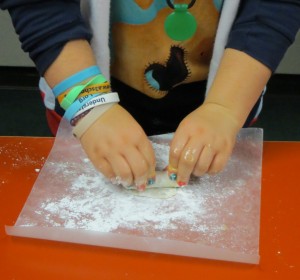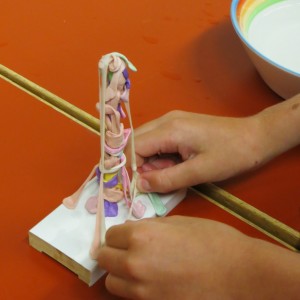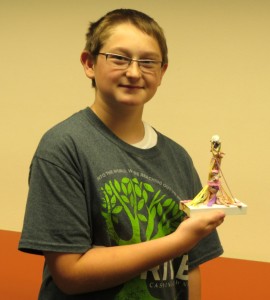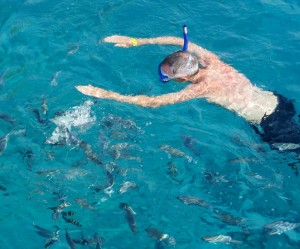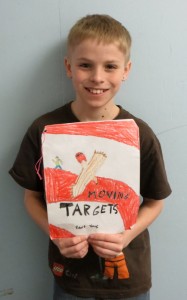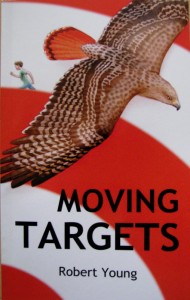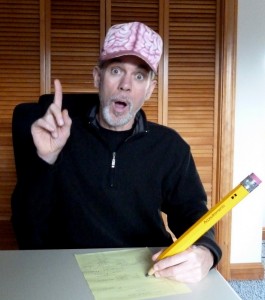Being a chewing gum consumer for more than 50 years, and having written three books on the topic, I thought it was high time to become a chewing gum maker. Thanks to a company (Glee ) that produces gum-making kits, it was easier than I thought. The kit contained everything I needed to make the gum. The kit comes with a gum base (the chewy part of gum) made with natural chicle, unlike the gum bases in most gum today, which contain only synthetic materials.
Chewing gum is made up of three main ingredients: the base, sweetener, and flavoring. First, I heated up the gum base until it was nice and gooey. This makes it easier to add the other ingredients.
I added corn syrup (sweetener) to the base and started mixing it in. After I got it mixed in, I poured the sticky blob of base onto a cutting board on which I had sprinkled confectioner’s sugar (more sweetener). The sugar coated the base and made it easy to knead, which I did by pushing and folding it over and over.
Then I divided the base into two parts and added the two different flavorings—cherry and mint—one to each. I mixed the flavoring in by kneading some more. When I got it all mixed in, I had a choice to make: what form would my gum take? Would it be stick gum, chunk gum, ball gum, or would it take some other shape?
I decided on ball gum, since that was the shape Thomas Adams used in 1869 when he made the first modern gum. I was repeating history. Cool! So, I pulled off small chunks of the mixed base and rolled them into balls. Adams wrapped his gum in tissue paper, but I decided to put mine in aluminum foil.
But not before the tasting. It tasted like real gum! And I had done it myself, in about 40 minutes.

